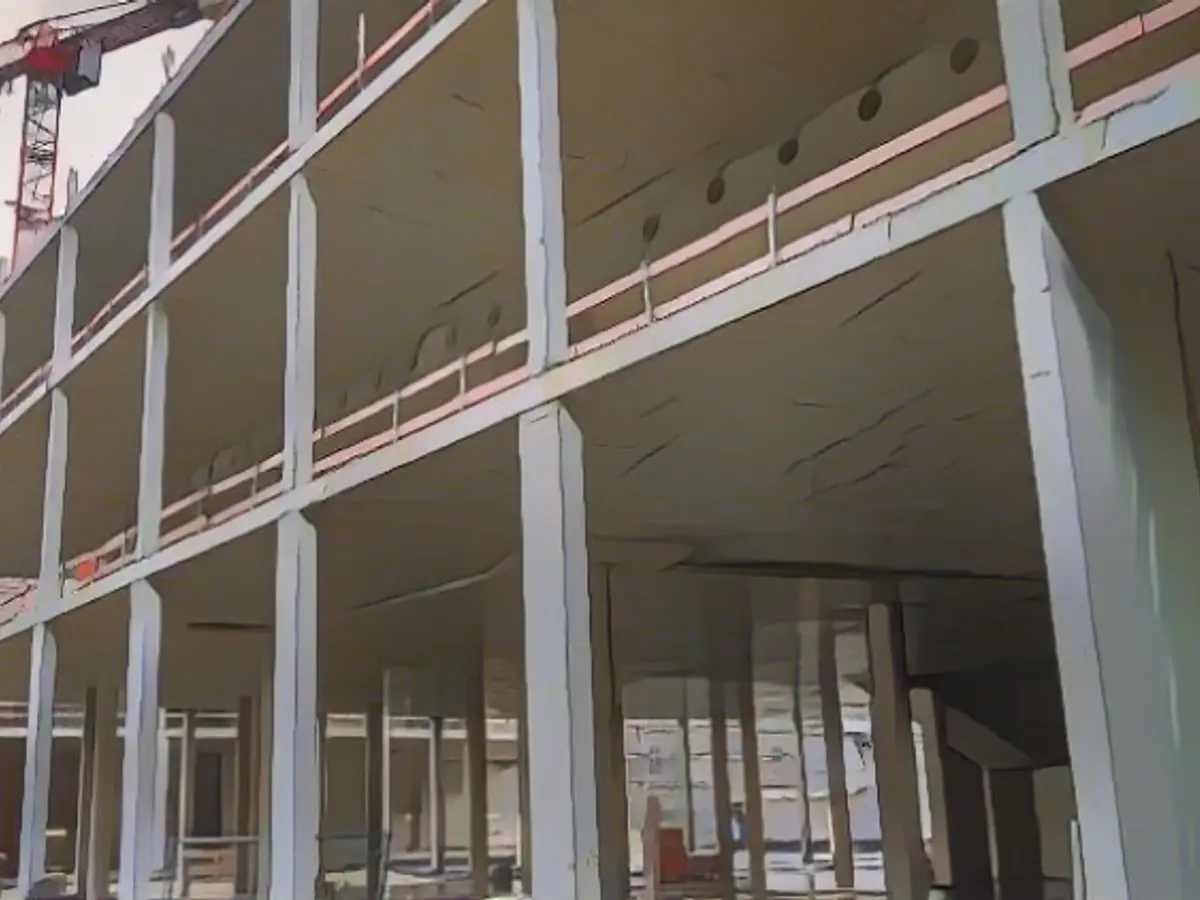A tempest is brewing within the real estate sector
The insolvencies of the initial project developers during the summer may have merely been a foreshadowing of the impending wave of bankruptcies. The ballooning interest rates are threatening to suffocate the real estate market, potentially leading to "systemically relevant losses in the banking sector."
The downturn in the real estate market is growing increasingly perilous, with rising construction costs, soaring interest rates, and mounting losses putting the sector on the brink of a smoldering financial crisis. The insolvencies of companies such as Euroboden, Project Group, and Development Partner during the summer served as a precursor to the larger wave of bankruptcies that could ultimately impact the banking sector. The escalating interest rates are increasingly putting pressure on even the industry's heavyweights, with major players potentially struggling to meet their debt obligations.
In its semiannual Financial Stability Report, the ECB soundly warns of the impending crisis. The debt-to-equity ratio of the leading real estate companies in the Eurozone is now "near or above the level before the global financial crisis," ten times their profits. With the onset of the interest rate shift last year, it has become increasingly difficult for companies to refinance their colossal debt pile. The most indebted companies risk encountering difficulties when they must repay their loans, according to the central bank.
The ECB reveals that commercial real estate loans have become a staggering 2.6 percent more expensive on average since the interest rate reversal commenced. Decreasing sales prices are causing income to dwindle: The number of transactions halved year-over-year during the first six months of the year. Furthermore, the trend towards remote work is causing rents to plummet due to the decreased demand for office towers. "This mix of cyclical and structural challenges has led to significant rating downgrades for real estate companies in recent months," reports the central bank.
The sector is grappling with substantial losses. Consequently, the stock market is mercilessly punishing real estate companies, with the largest listed groups currently trading 30 percent below their book value – the largest discount since the 2008 financial crisis. The central bankers fear that many companies could soon run out of steam: "Business models centered on low interest rates and pre-pandemic profitability expectations could become unsustainable in the medium term."
Banking sector precarious
The impending losses could soon pose a problem for bank balance sheets, according to the monetary watchdogs. This is because the commercial real estate market accounts for up to 10 percent of all bank loans in the Eurozone. The ECB anticipates the proportion of loans to companies in default will double to 26 percent in the near future. If interest rates remain high for another two years and turnover in the real estate sector falls by 20 percent, the ECB estimates that as many as half of all loans may be in danger.
The silver lining is that the looming losses in the commercial real estate market alone are unlikely to spell disaster for the Eurozone levels. However, things may become challenging for banks with significant exposure to this segment. The crisis in the real estate sector is only one of the numerous challenges – inflation, war in Ukraine and the Middle East, and interest rate reversals – currently plaguing the region.
The uncertainty is causing the potential for an amplifying factor in a negative scenario, increasing the risk of systemic losses in the banking system. In other words, the impending wave of bankruptcies in the real estate market could become the proverbial straw that breaks the camel's back and triggers a new banking meltdown. The contagion effect is also a concern: a wave of bankruptcies could result in "severe losses" in other parts of the financial system that depend on commercial real estate, such as investment funds or insurers.
The residential real estate market is also feeling the heat due to the ECB's interest rate explosion. The prospect of a crash is even greater in this sector, with 30 percent of all bank loans in the Eurozone falling under mortgages. However, this segment has yet to see significant disruption, with most builders still employed during the period of increased interest rates. Yet, a noticeable weakening of the labor market could pose considerable risks to residential real estate portfolios.
- The surge in interest rates is pushing many residential construction projects to the edge, as developers grapple with securing affordable financing for their projects.
- With mortgage rates on the rise and demand for new homes waning due to economic uncertainty, numerous real estate firms have seen their interest income decrease, placing strain on their profitability.
Sources:
Insights from Enrichment Data:
Real Estate Market Challenges:
- Burdening Finance Costs: Elevated interest rates increase the cost of borrowing for real estate investors, potentially dampening demand for commercial and residential real estate, leading to lower property prices and reduced investment activity.
- Reduced Traditional Lending: Traditional lenders are decreasing their exposure to commercial real estate, creating a financing gap. This gap is being filled by private debt investors, who are structuring new loans against reset real estate valuations, providing leeway for investment.
- Enhanced Risk Provisioning: The rise in non-performing loans (NPLs) and diminished collateral values is escalating risk provisioning for banks. This is particularly evident in the commercial real estate market, where NPL ratios have nearly doubled over an 18-month period, posing significant credit default risks.
- Financial Stability Risks: Although the risks from commercial real estate are not expected to threaten the overall financial system, individual institutions can be significantly burdened by major loan defaults. This could impact their earnings and stability in the short term.
Banking Sector Challenges:
- Elevated Risk Provisioning: Banks are dramatically increasing risk provisioning for their commercial real estate loan portfolios due to rising NPL ratios and decreased collateral values. This indicates a higher likelihood of loan defaults and potential losses for banks.
- Credit Default Risks: Loans for project developers, who often employ advance payments, are particularly risky. High interest rates can reduce demand for properties, lead to project delays, or result in lower returns, increasing loan repayment difficulties.
- Financial Stability Risks: While the risks from commercial real estate are not forecasted to jeopardize the overall financial system, individual institutions can be heavily burdened by major loan defaults. This could impact their earnings and stability in the short term.
Overall Impact:
The combination of higher interest rates and geopolitical uncertainties has the potential to shape the economic trajectory of the Eurozone. The ECB's rate-cut strategy hinges on maintaining inflation under control, but rising U.S. Treasury yields and potential tariffs could further strain the region's economic momentum.








